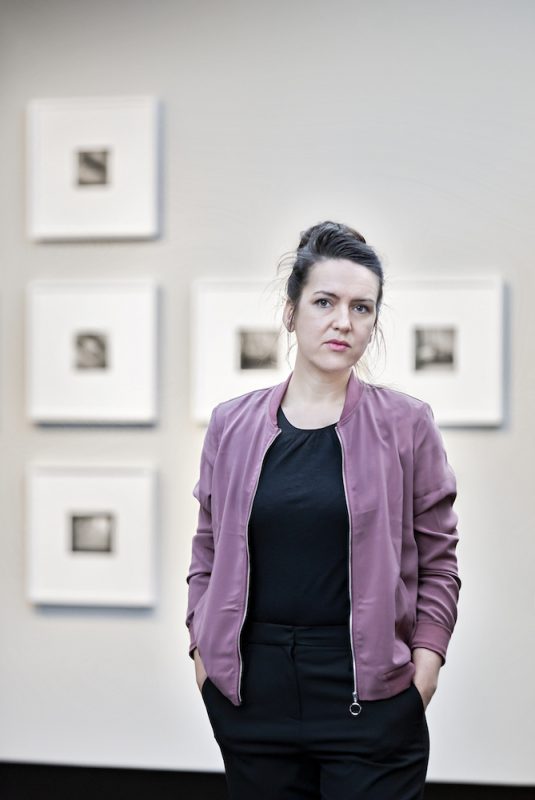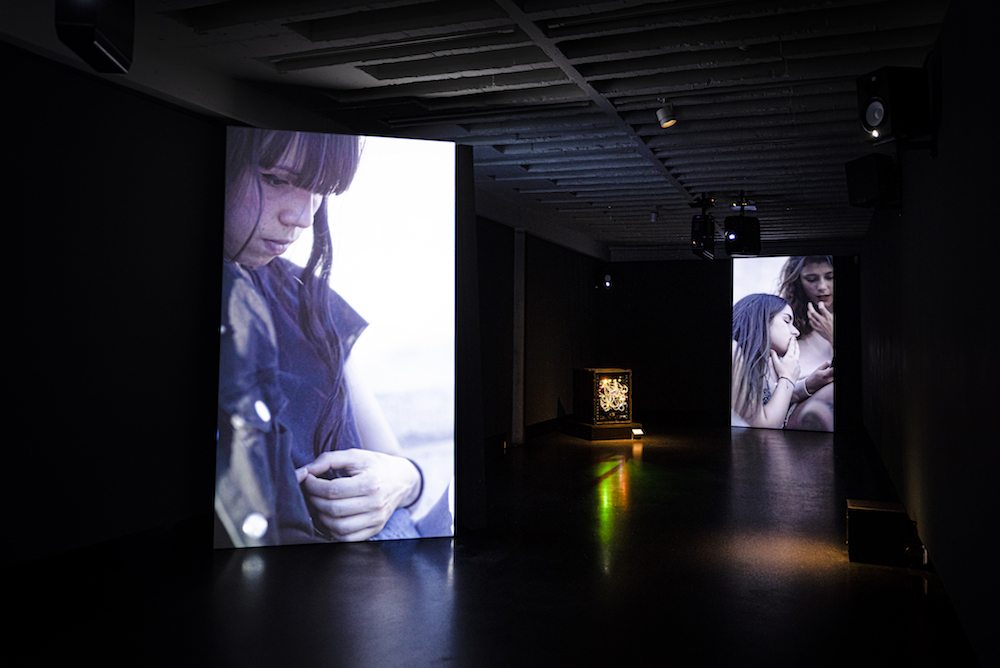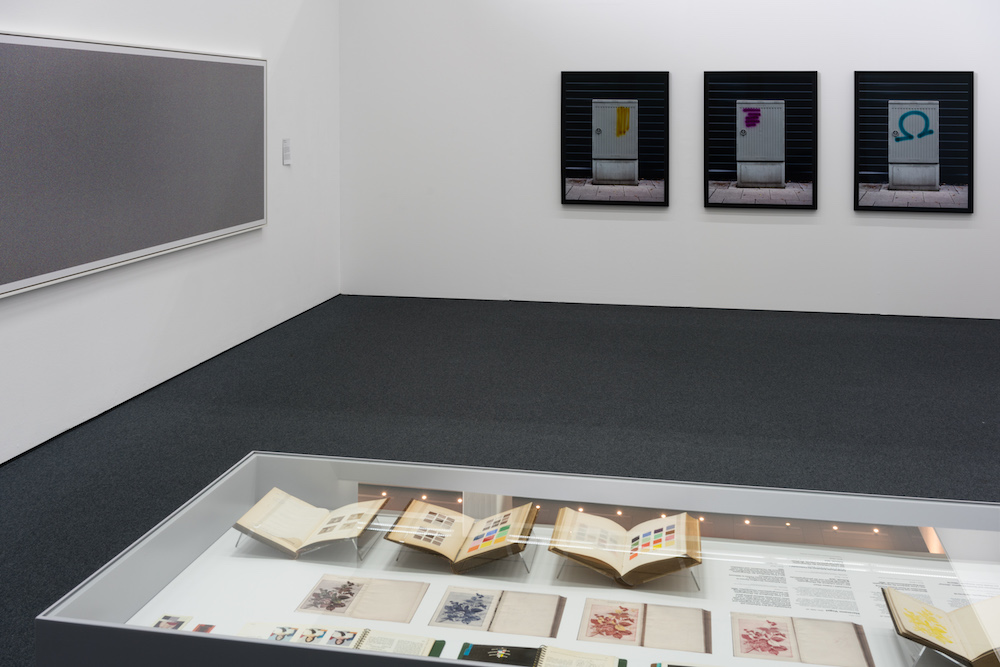1000 Words
Curator Conversations
#9 Kathrin Schönegg
Kathrin Schönegg is a photography historian and Curator at C/O Berlin, Germany. She holds a PhD in Art and Media Studies from the University of Konstanz. She worked on exhibitions at the Getty Research Institute in Los Angeles, Kupferstich-Kabinett in Dresden, Münchner Stadtmuseum in Munich, and the Folkwang Museum in Essen, including (Mis)Understanding Photography: Works and Manifestos (2014). In 2017 she co-curated Farewell Photography: Biennale für aktuelle Fotografie in Mannheim, Ludwigshafen, and Heidelberg. She is the recipient of the Thomas Friedrich Grant in Photography at the Berlinische Galerie (2017), the DGPh History of Photography Research Award of the German Photographic Association (2018) and the Exhibition Research and Production Fellowship by Les Rencontres d’Arles (2019). At C/O Berlin she leads the funding programme for up-and-coming talents, the C/O Berlin Talent Award, and co-develops C/O Berlin’s exhibition programme. Recent curation for C/O Berlin includes Robert Frank: Unseen (2019); Sylvain Couzinet-Jacques: Sub Rosa – C/O Berlin Talent Award (2019); Christopher Williams: MODEL: Kochgeschirre, Kinder, Viet Nam (Angepasst zum Benutzen) (2019); Francesca Woodman: On Being an Angel (2020); and Sophie Thun: Extension (2020). A regular writer on photography, her most recent publications include Heinz von Perckhammer. Eine Fotografenkarriere zwischen Weimarer Republik und Nationalsozialismus (Berlin 2018) and Fotografiegeschichte der Abstraktion (Köln 2019). Schönegg is currently preparing a thematic group show engaging with photography and the cloud.
What is it that attracts you to the exhibition form?
The exhibition is one of various forms that research can take. Not every project is necessarily an exhibit; some function better as a book, a magazine, or an online format. Compared to these forms, I would describe the exhibition as seeing and thinking in space. This also implies that it triggers not only a visual but also a physical experience. Creating narratives that unfold through a combination of images and objects that viewers explore while walking through the space and constantly changing or expanding their perspective is a thrilling and unique activating form of argumentation.
What does it mean to be a curator in an age of image and information excess?
There was a feuilleton discussion in Germany last summer about the status of the curator in the era of social media. It was started by art and media theorist Stefan Heidenreich who polemically claimed that all curators should be done away with, since they represent a nondemocratic, illiberal, corrupt, and obsolete system of power. By contrast he identified social networks as the democratic future for a curational practice by everybody. Just as Joseph Beuys stated decades ago that everyone is an artist (“Jeder Mensch ist ein Künstler”), Heidenreich now calls for everyone to be a curator (“Jeder Mensch ist ein Kurator”).
Despite the questionable claim that social media ever was or can be a democratic tool (bear in mind the lack of universal accessibility of digital technologies, the racism underlying our algorithms, or human-content moderation that is executively exercised by leading Internet companies such as Facebook and Google, and the standards and categories they set), I believe that this is a fundamental misunderstanding of the tools and tasks of curating in an age of omnipresent images and information. Precisely because we all “curate” our own lives with social media, expert knowledge is needed more than ever to critically mirror those developments inside exhibition halls and elsewhere. As curators of photography we need to shed light on those mechanisms of our everyday use of imagery that are hidden beneath technical infrastructures or intentionally kept invisible to users by capitalist companies.
At C/O Berlin we are collaborating with pictorial specialists to develop an exhibition focusing on our contemporary ways of communicating by means of images (the working title is Send Me an Image: From the Postcard to Social Media, planned for 2021). We aim to explore the utopian dream of global accessibility and, conversely, the boundaries of free image transmission. Being a curator in the age of image and information excess means to deal with this new paradigm of our digitised worlds by, for example, taking it as a topic for an exhibition, working with artists to translate net-based phenomena into the physical space, conquering the institution’s digital space (websites, etc.) with content, and thinking critically about the abundance of images that we are constantly confronted with.
What is the most invaluable skill required for a curator?
The flexibility to be active in various roles and positions at the same time: being a companion for the artist as well as their assistant and adviser, having a curatorial style while being objective and invisible as the selecting subject and author of the show, being an advocate for your medium while also criticising it, being a representative of your institution and also challenging it, being confident and persuasive as an applicant for funding and humble when looking for sponsors, being self-critical of your own role while manoeuvering gingerly through conflicting expectations confronting you every day.
What was your route into curating?
I wrote my dissertation on abstraction in photography, covering a wide historical spectrum from the medium’s early experimental beginnings in the 1830s to contemporary fine-art photography. My sources were scattered all over the globe, and I did a lot of research in museum archives in different countries. This was a starting point, since it gave me an insight to archiving and collecting (and exhibiting) from the user’s perspective. I then switched sides and did several internships, followed by a wonderful scholarship that the Alfried Bohlen von Krupp und Halbach-Foundation runs in Germany. Titled “museum curators for photography,” it teaches photography historians about curating by sending them to various photography collections in Germany and abroad. This experience paved my way into freelance curating, which I did for a couple of years until I joined C/O Berlin as a permanent curator last summer.
What is the most memorable exhibition that you’ve visited?
One that I often think back to is called Großvater: Ein Pionier wie wir (Grandfather: A Pioneer Like Us), an exhibition on the famous “exhibition maker” Harald Szeemann in 2018. As part of the acquisition of the Szeemann estate by the Getty Research Institute in Los Angeles in 2011, two shows were developed and then sent on tour; one of the venues was Bern, Szeeman’s hometown in Switzerland. Großvater: Ein Pionier wie wir was also the title of Szeemann’s first curated show following the monumental documenta 5. The exhibition, which was held in his own apartment, tells the story of Szeemann’s grandfather, a prominent coiffeur. The show included many physical objects from the family’s private archive. While at the venues in Los Angeles and Düsseldorf Szeemann’s show was reconstructed in a white cube, in Bern the exhibit was shown in exactly the same apartment in which Szeemann had originally installed it in 1974: a private room with vintage furniture. This total simulacrum still sticks with me, since it demonstrates, in a very powerful way, that the circumstances of the presentation fundamentally change the perception of the objects. In the Kunsthalle Düsseldorf it was obvious to visitors that they were being confronted with a reconstruction made for an exhibition hall. In contrast, in Bern it was impossible for visitors to know if they were walking through a contemporary presentation or not. It was quite baffling, like a throwback in time.
What constitutes curatorial responsibility in the context within which you work?
I am currently curating for an exhibition house that functions differently than most other German institutions. The cultural landscape of Germany is mainly built on museums, exhibition halls, and Kunstvereine. C/O Berlin doesn’t fit into any of these categories. As a nonprofit foundation financed through admission fees, book sales, sponsorship, donations, project funding, and contributions from C/O Berlin Friends, it has not received any regular funding over the past twenty years. However, starting in the financial year 2020/21, C/O Berlin will receive support from the Berlin Senate Department for Culture and Europe. Besides balancing finances, visitor numbers, and content more carefully than public-run institutions, it is my responsibility as curator to sharpen my institution’s profile; that is, in comparison to museums. Similar to general exhibition halls, we foster contemporary perspectives and promote a discourse around our medium through talks, panels, and education, that could be adapted by museums. Our content-related orientation, the design of our presentation, and our historical approach to art and photography often differs from this form of institution and I feel we have more freedom to speculate in our exhibition programme. Unlike general exhibition halls, C/O Berlin is dedicated exclusively to photography. This makes us responsible for the medium itself. We do not have our own collection anchoring us in history. Although we regularly present photographers from the canon of the second half of the twentieth century, our focus lies nonetheless on the developments of the last three decades – precisely the period when photography was freed from all restraints. We deal with a medium in transition and we have to constantly ask ourselves what photography was, is, and will be. Today a photograph can be a high-valued vintage print as well as an Instagram snapshot made by a digital device. The medium increasingly disappears somewhere in between the classical museum presentation of the departments of drawing and prints and digitally circulating net art. I believe that our curatorial responsibility toward our medium is to define its future between those two extreme poles. We need to develop a new understanding of the medium and the material we engage with. We need to think about what types of new displays we can develop to mirror photography’s various forms of applications – that have always been diverse and are becoming increasingly so – in order to put us in the position to deal with fine art, science, press, amateurism, social media, and many other aspects.
What is the one myth that you would like to dispel around being a curator?
If there is a myth about being a curator, it is a misunderstanding. The term is used extensively these days for everything connected to combining – from music and food to art. Since the rise of autonomous curators in the 1990s, the term has taken on a notion of glamour and power. However, the reality is quite different. Most curation is done for institutions that involves a lot of bureaucracy: acquiring funding, writing reports, and doing administrative work. It is a hands-on job that has little to do with drinking champagne at nicely made-up representative events and openings.
What advice would you give to aspiring curators?
You should care about and focus on content. Most of the curatorial study programmes that have been popping up in recent years seem to mainly teach the history and theory of curation or they practice display methods. I am convinced that it is more important to know the field and the subject that you aim to work on well. Aspiring curators should be researchers who view the exhibition as one of various forms for conveying content. Don’t curate to curate.♦
Further interviews in the Curator Conversations series can be read here.
—
Curator Conversations is part of a collaborative set of activities on photography curation and scholarship initiated by Tim Clark (1000 Words and The Institute of Photography, Falmouth University), Christopher Stewart (London College of Communication, University of the Arts London) and Esther Teichmann (Royal College of Art) that has included the symposium, Encounters: Photography and Curation, in 2018 and a ten week course, Photography and Curation, hosted by The Photographers’ Gallery, London in 2018-19.
Images:
1-Kathrin Schönegg in the exhibition Francesca Woodman: On Being an Angel, C/O Berlin 2020. © Stephanie von Becker.
2-Installation view of Sylvain Couzinet-Jacques: Sub Rosa – C/O Berlin Talent Award 2019, C/O Berlin. © David von Becker.
3-Installation view of How Your Camera Works as part of Biennale für aktuelle Fotografie 2017, Wilhelm Hack Museum Ludwigshafen © Andreas Langfeld.



